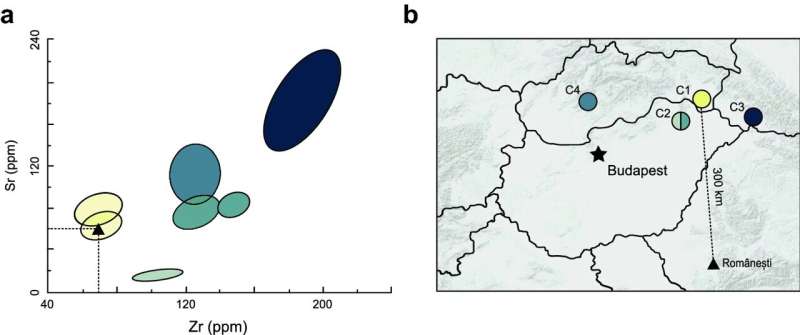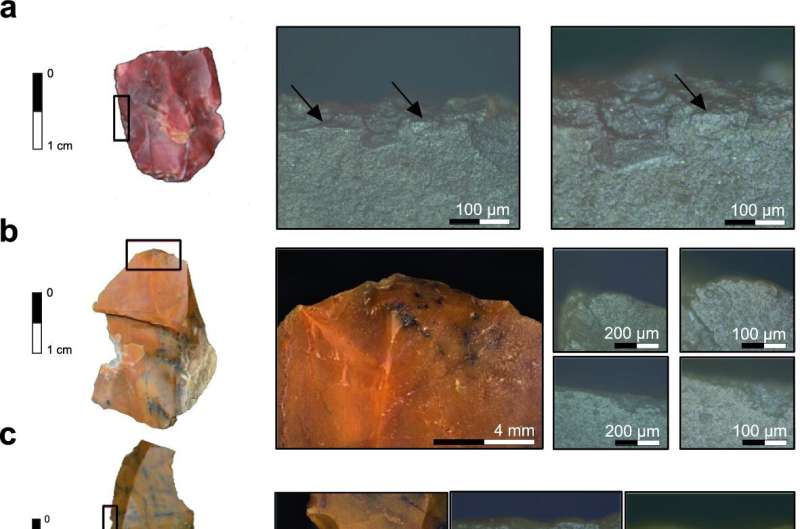Archaeological excavations in Romania show life of earliest modern humans in Europe

In a new article in the journal Scientific Reports, Leiden archaeologist Wei Chu and colleagues report on recent excavations in Western Romania at the site of Româneşti, one of the most important sites in southeastern Europe associated with the earliest Homo sapiens. The site gives an important glimpse in how modern humans adapted to their new European environment.
Many early Homo sapiens fossils have been found in Southeastern Europe, presumably because they first entered the continent through the Balkan Peninsula. Still, few Homo sapiens fossils have been found in association with cultural remains, making Româneşti an important window into observing how the first European Homo sapiens coped with their new environments.
So how did Homo sapiens cope with this new continent? The researchers found that artifacts at Româneşti were geared towards producing highly standardized chipped stone bladelets that could have been used as inserts for arrows or spears. Peculiar grindstones might have also been used to straighten wooden shafts, suggesting that Româneşti was a kind of a projectile workshop.
Thousands of artifacts, some of which come from over 300 km away, combined with evidence for onsite fire use demonstrate that Româneşti was an important place in the landscape that was repeatedly returned to. Microscopic analyses of the artifact surfaces demonstrate that most of them were not used, suggesting that the site may have been used as a place for manufacturing tools that were later transported offsite.

Modern humans and Neandertals
The results of the large lithic assemblages and their high-quality contexts from the new excavations at Româneşti indicate changes in the ways Homo sapiens subsisted compared to Neandertals, helping to explain their success.
The next step is trying to elaborate on what the relationship of these early Homo sapiens was to earlier Neandertals. Nearby contemporary fossils indicate that Homo sapiens and Neandertals were interbreeding, but we still don't know what that means for the ways in which their mutual lifestyles were changing and how we can see that in their archaeological remains.
More information: Wei Chu et al, Aurignacian dynamics in Southeastern Europe based on spatial analysis, sediment geochemistry, raw materials, lithic analysis, and use-wear from Românești-Dumbrăvița, Scientific Reports (2022). DOI: 10.1038/s41598-022-15544-5
Journal information: Scientific Reports
Provided by Leiden University





















